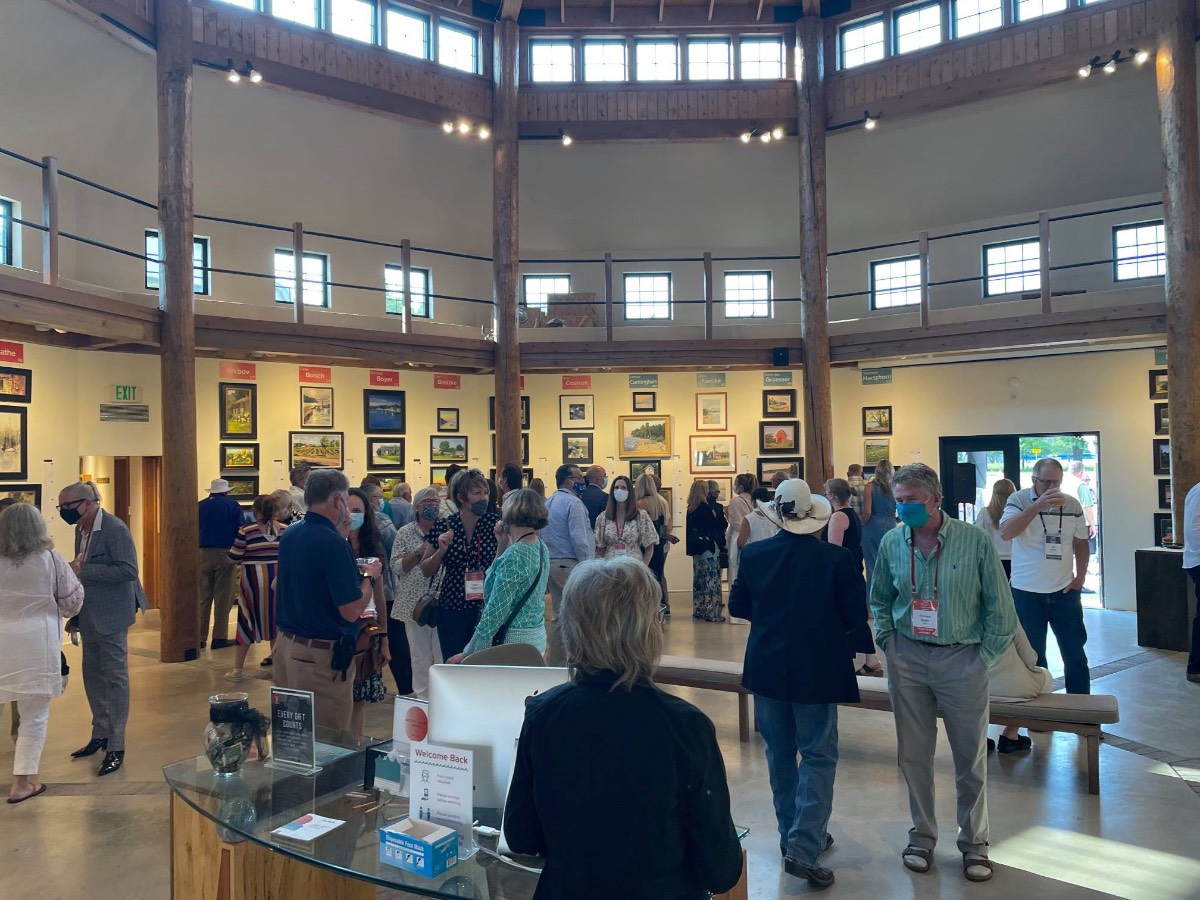By Daniel Grant

Most artists are happy to talk about what inspires them, where and with whom they studied, the subjects they pursue, the medium in which they work, or the techniques they employ. But talking about money — what their work costs, how and when they want to be paid, whether they allow discounts, and if so, how much — knocks them off a lofty perch, making them feel like used-car salesmen.
Pricing Artwork
In the building trades, contractors charge hourly rates, as well as the cost of materials plus an average 15 percent markup, but artists cannot do the same. Some artists simply work more slowly than others, for one thing. More importantly, the final price may have no relationship to the market for the artist’s work, especially if the artist is relatively unknown and has little or no history of sales.
The building trades are not completely irrelevant, however, because a completed house and a completed work of art can be priced in similar ways, through comparables. A three-bedroom, two-story house in a neighborhood of similar-sized homes is appraised based on the sale prices of those in its immediate vicinity.
Artists, too, need to find comparables — work of the same size, with similar subject matter, in the same medium, produced by artists in the same stage of their careers — in order to set prices. To do so, they need to visit art fairs, galleries, and other places where comparable artworks are sold.
Collecting Payment
How to get paid would seem obvious: just ask. But in what form are you willing to accept payment? Cash has obvious advantages, since it doesn’t need any time to “clear” as checks and credit card payments do, and there is no service fee of between 2 to 4 percent for the vendor to pay to a middleman, as exists with credit cards and PayPal. Still, as a practical matter, most people do not carry large amounts of cash, nor do most vendors want to be handling that much money at one time anyway.
Personal checks can be nearly as good as cash, although a declining number of people these days pay for their purchases this way. Checks take a certain amount of time to clear, and there is the potential that the buyer’s bank account will have insufficient funds, which would be discovered only after the purchased object has been taken and the check has been returned (five to 10 business days later). E-checks (electronic checks) add a level of immediacy to the transfer of money, although some fraudsters have used them to gain access to bank accounts.

Credit cards are accepted most everywhere, although in order to accept them as payment vendors must obtain a merchant services account, which involves a range of setup fees, the acquisition of a credit card terminal or a card-processing app for a mobile device, transaction fees (the percentage of the purchase price the company takes, plus a flat per-purchase cost), authorization fees (a charge for each time the company authorizes a transaction), statement fees, annual or monthly fees (the cost of having an account), monthly minimum fees (an additional cost if the total charges do not reach a certain amount), and chargeback fees (for reimbursing the buyer if there is a return). Paying these fees and taking the time to set up an account makes sense if an artist plans to sell regularly from a studio or at arts fairs throughout the year, less so if a sale is a once-a-year event.
There are no fees for vendors to set up merchant accounts with PayPal, but it takes four business days for funds to be deposited into one’s account and comes with other costs, including monthly fees of up to $30 (more if you want fraud protection) and transaction fees of 2.9 percent in addition to 30 cents for debit and credit card purchases. Even more costly are chargeback fees of $20 and PayPal will still retain its transaction fee.
Venmo is also popular, although buyers have the option of retrieving money sent to a vendor’s account, leaving that vendor in the lurch. And cybercurrencies such as bitcoin and Ethereum fluctuate wildly in value and have been the targets of hackers.
Handling Requests for Discounts
At art fairs and open studio events, artists frequently come up against bargain hunters offering to pay as little as 50 cents on the dollar for one or more pieces. It’s easy to feel insulted, but the issue isn’t so clear-cut. Sticking to published list prices may be the cleanest system and could generate a sense of respect for the artist, demonstrating that they believe in their work and have priced it fairly. At the same time, art dealers regularly permit discounts of five, 10, 15, and even 20 percent to encourage sales, and gallery sales usually result in a 50 percent commission.
Whether an artist decides to offer a discount or hold firm to the list price, the matter needs to be considered in advance. Many art buyers come from the business world and are skilled negotiators. An artist doesn’t want to find him or herself trying to match wits with a sophisticated buyer in the pressure-cooker situation of an art fair booth.
Daniel Grant is the author of The Business of Being an Artist. He’s a regular contributor to PleinAir Magazine.







